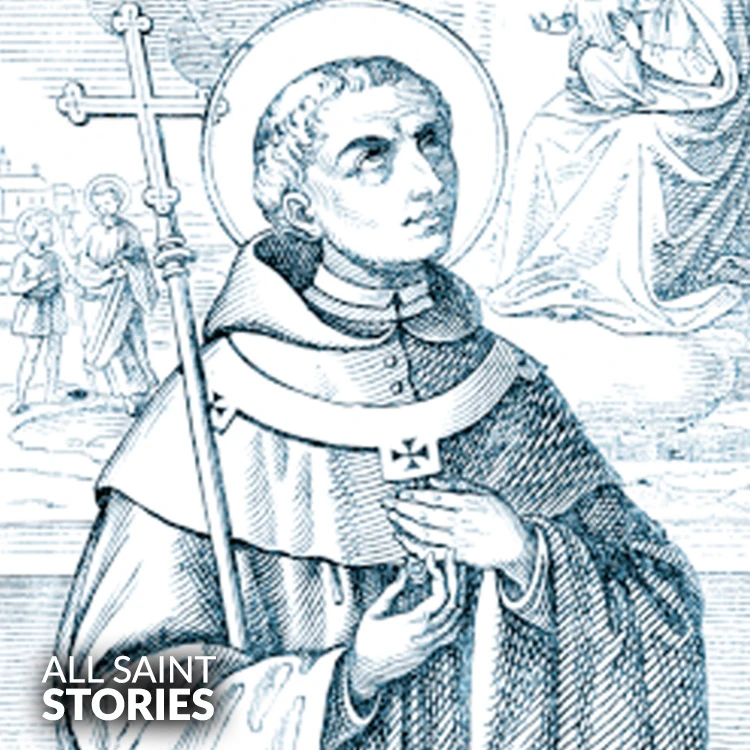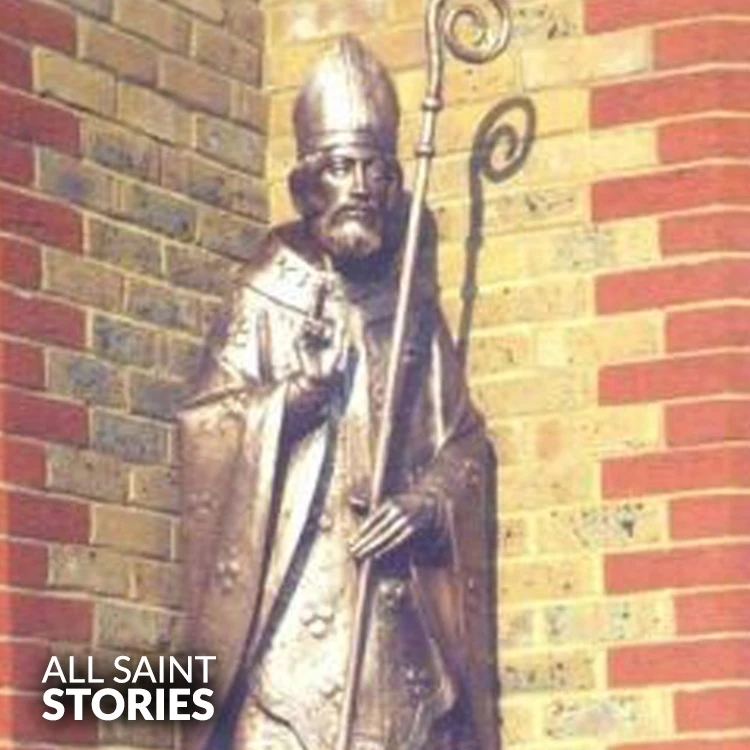“Almighty God, who didst call St. Edmund to the royal throne of East Anglia, and who by his martyrdom didst make him a champion of Christ’s Church, grant that through his intercession, we may be steadfast in our faith, even in the face of trials. Through Christ our Lord, Amen.”
ST. EDMUND
ST. EDMUND

St. Edmund of East Anglia was a 9th-century Anglo-Saxon king who became a martyr for his Christian faith. Known for his piety and leadership, he was captured and executed by Viking invaders, becoming one of England's earliest martyrs. His burial place, Bury St. Edmunds, became an important pilgrimage site. His feast day is celebrated on November 20th.
St. Edmund, also known as Edmund the Martyr, was the King of East Anglia, a kingdom in what is now eastern England, during the 9th century. He was born into a Christian Anglo-Saxon royal family. Although the exact date of his birth is not recorded, his life and legacy remain significant in both religious and English history. Edmund became king after the death of his predecessor, and during his reign, he worked to strengthen Christianity in his kingdom, which was facing increasing pressure from Viking invasions.
Edmund's reign was marked by his devout Christian beliefs and efforts to maintain peace and stability within his realm. However, in 869, Viking invaders led by Ivar the Boneless attacked East Anglia, eventually capturing Edmund. According to historical accounts, Edmund refused to renounce his faith or accept pagan practices. As a result, he was tortured and executed in a brutal manner, with his death by beheading and his body subjected to further desecration.
His martyrdom was soon followed by a series of miracles attributed to his intercession, and he quickly became revered as a saint. His burial site in Bury St. Edmunds, Suffolk, became one of the most important pilgrimage destinations in medieval England. The abbey built around his tomb, known as Bury St. Edmunds Abbey, was a major center of Christian worship and attracted pilgrims from across the country and beyond.
St. Edmund’s canonization is not formally recorded in the same manner as many other saints, but his cult was widespread by the 10th century. His feast day, celebrated on November 20th, honors his life and martyrdom. As one of the earliest Christian martyrs of England, St. Edmund's influence spread throughout the English-speaking world, and his story was passed down through generations. His legacy endures in the town of Bury St. Edmunds, where a statue of the saint stands, and where his name is remembered in the local cathedral.
St. Edmund is often depicted in medieval artwork holding a spear, a symbol of his kingship and his martyrdom. His steadfast faith in the face of death became an enduring symbol for many Christians during the Viking Age, a time of great instability and conflict.
Though much of the precise history surrounding his life is shrouded in legend, St. Edmund's story continues to inspire Christians today as an example of piety, courage, and the strength of faith in the face of persecution.
Video Not Found
The information on this website is compiled from various trusted sources. While we aim for accuracy, some details may be incomplete or contain discrepancies.
If you notice any errors or have additional information about this saint, please use the form on the left to share your suggestions. Your input helps us improve and maintain reliable content for everyone.
All submissions are reviewed carefully, and your personal details will remain confidential. Thank you for contributing to the accuracy and value of this resource.
Credits & Acknowledgments
- Anudina Visudhar (Malayalam) – Life of Saints for Everyday
by Msgr. Thomas Moothedan, M.A., D.D. - Saint Companions for Each Day
by A. J. M. Mausolfe & J. K. Mausolfe - US Catholic (Faith in Real Life) – Informational articles
- Wikipedia – General reference content and images
- Anastpaul.com – Saint images and reflections
- Pravachaka Sabdam (Malayalam) – Saint-related content and insights
We sincerely thank these authors and platforms for their valuable contributions. If we have unintentionally missed any attribution, please notify us, and we will make the correction promptly.
If you have any suggestion about ST. EDMUND
Your suggestion will help improve the information about this saint. Your details will not be disclosed anywhere.
© 2025 Copyright @ www.allsaintstories.com


 English
English
 Italian
Italian
 French
French
 Spanish
Spanish
 Malayalam
Malayalam
 Russian
Russian
 Korean
Korean
 Sinhala
Sinhala
 Japanese
Japanese
 Arabic
Arabic
 Portuguese
Portuguese
 Bantu
Bantu
 Greek
Greek
 German
German
 Dutch
Dutch
 Filipino
Filipino